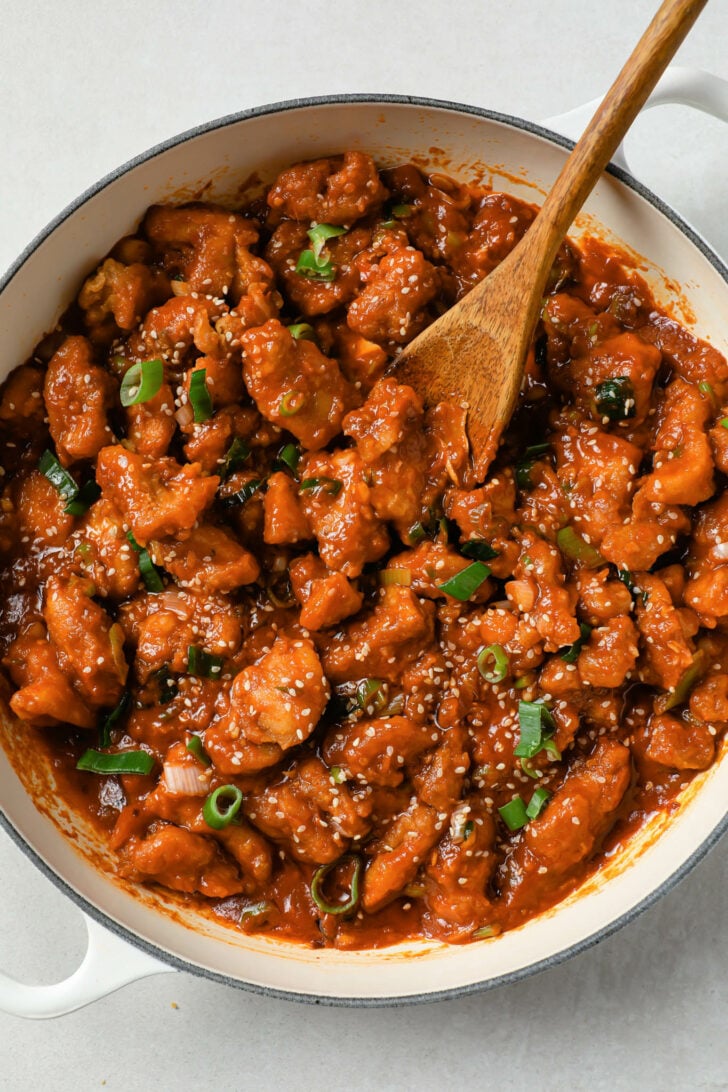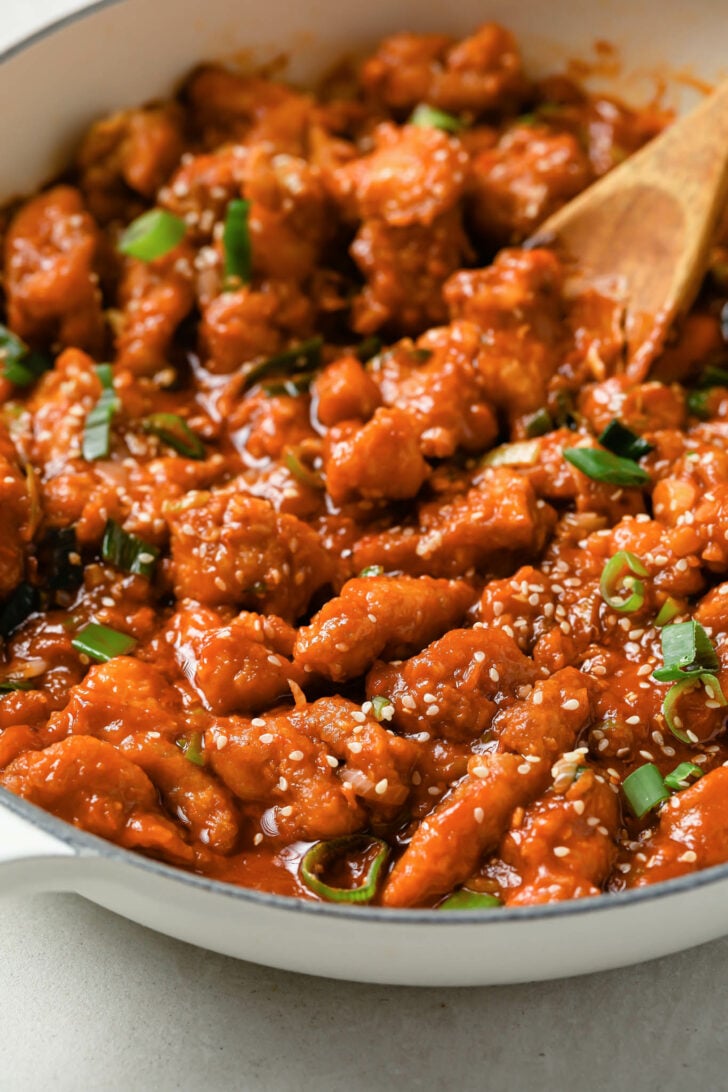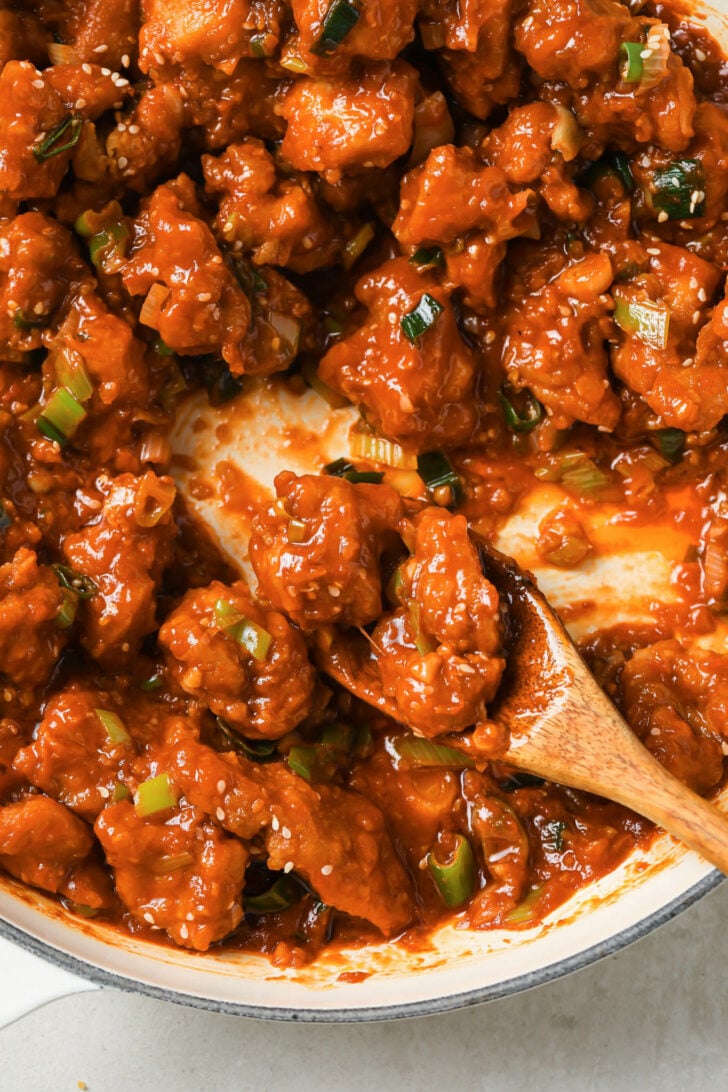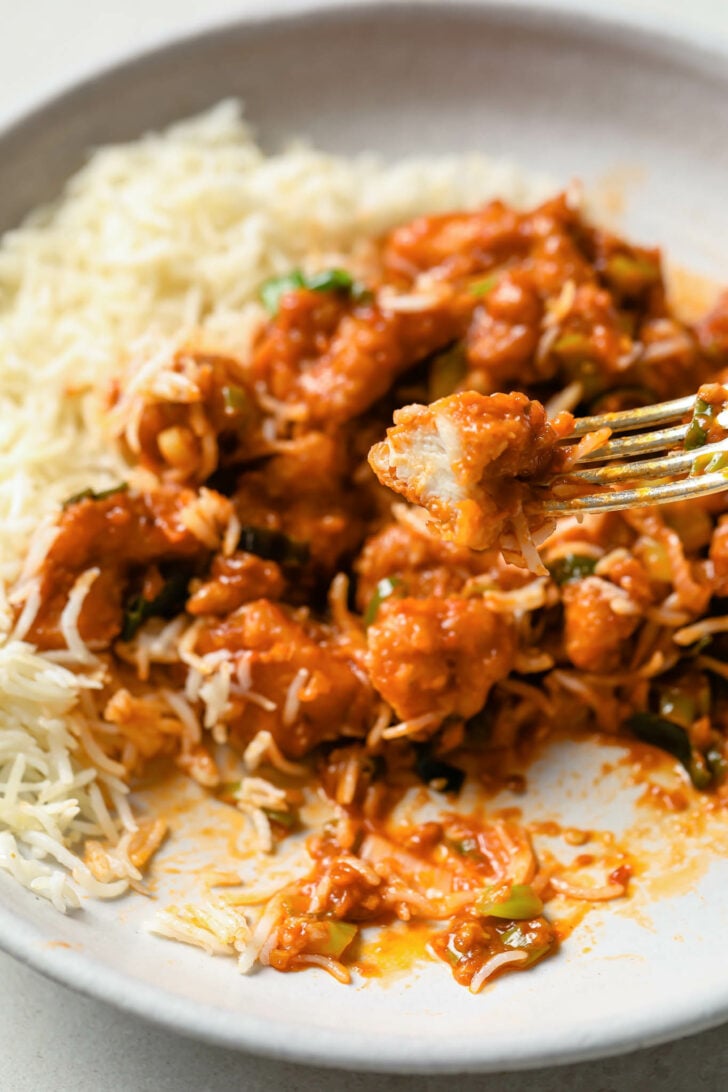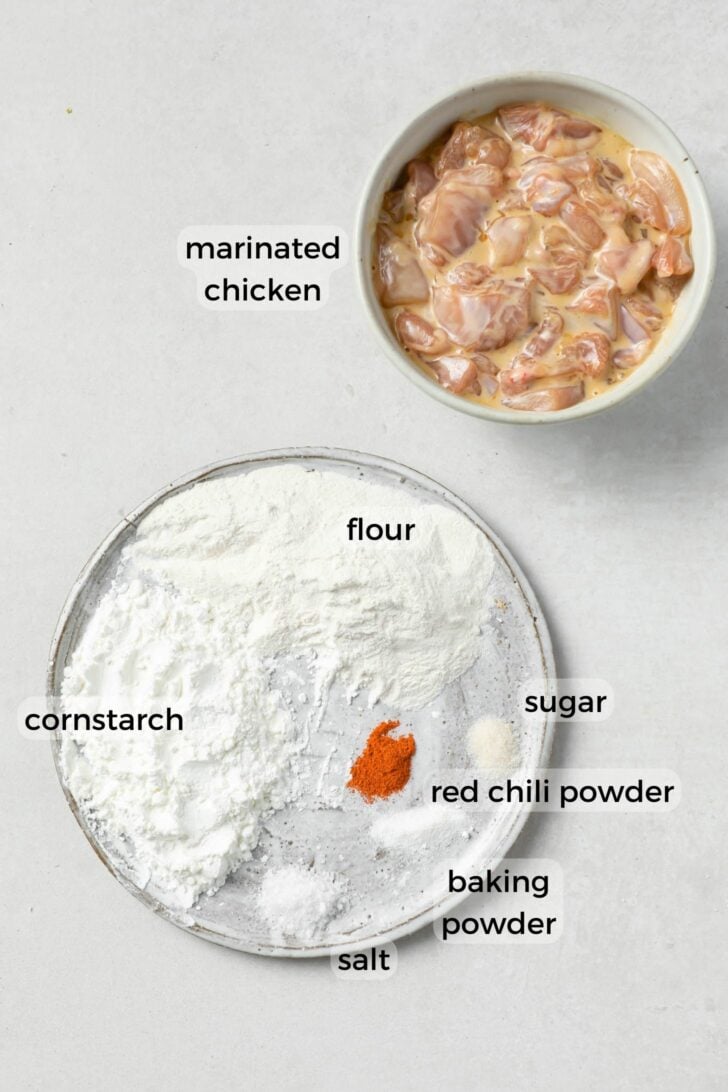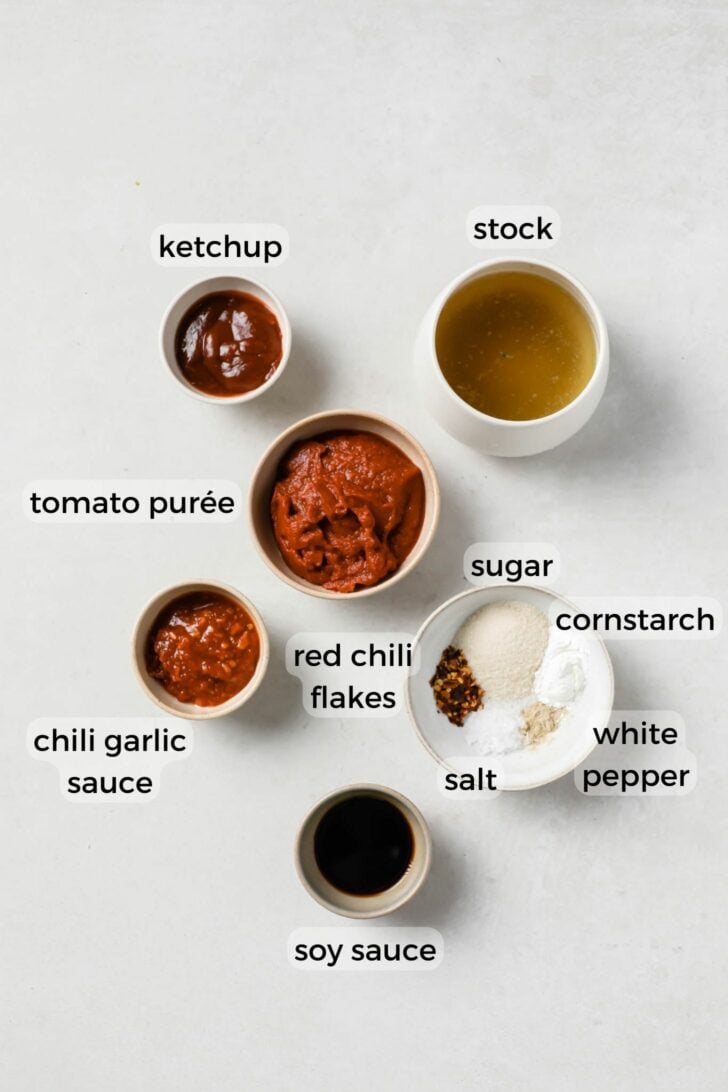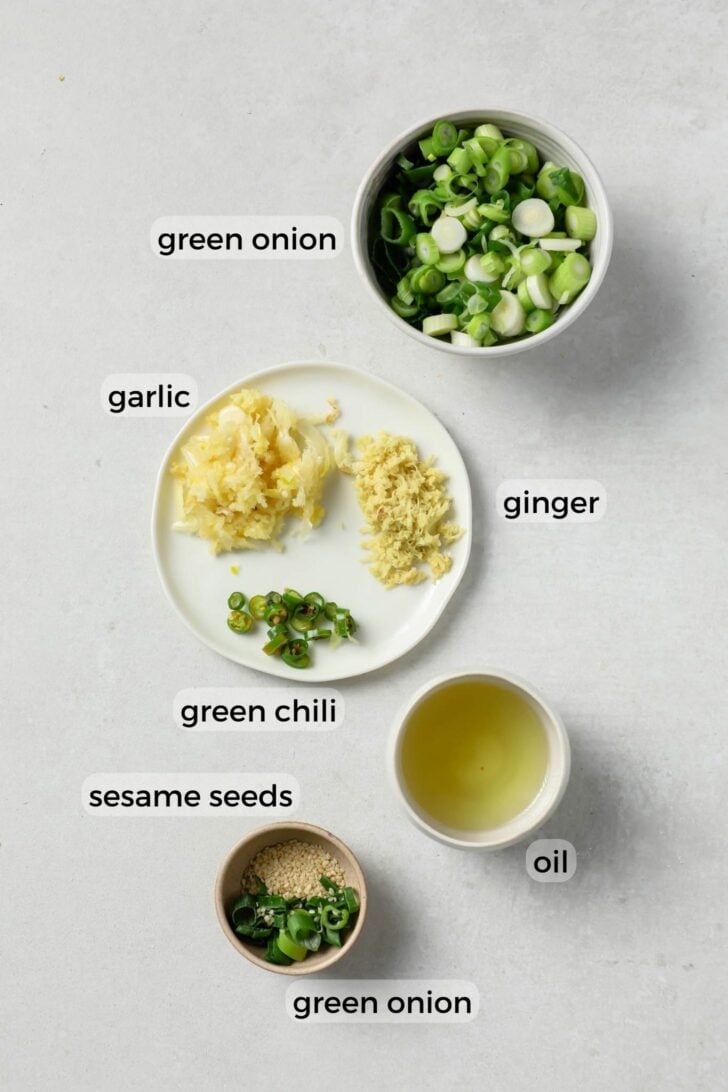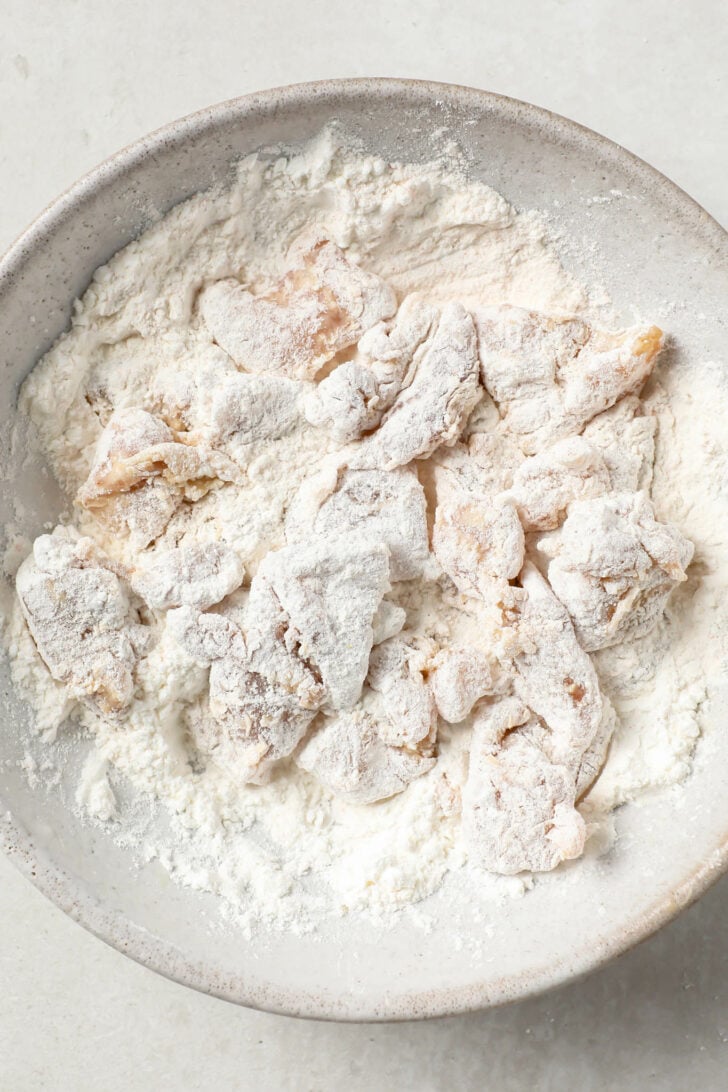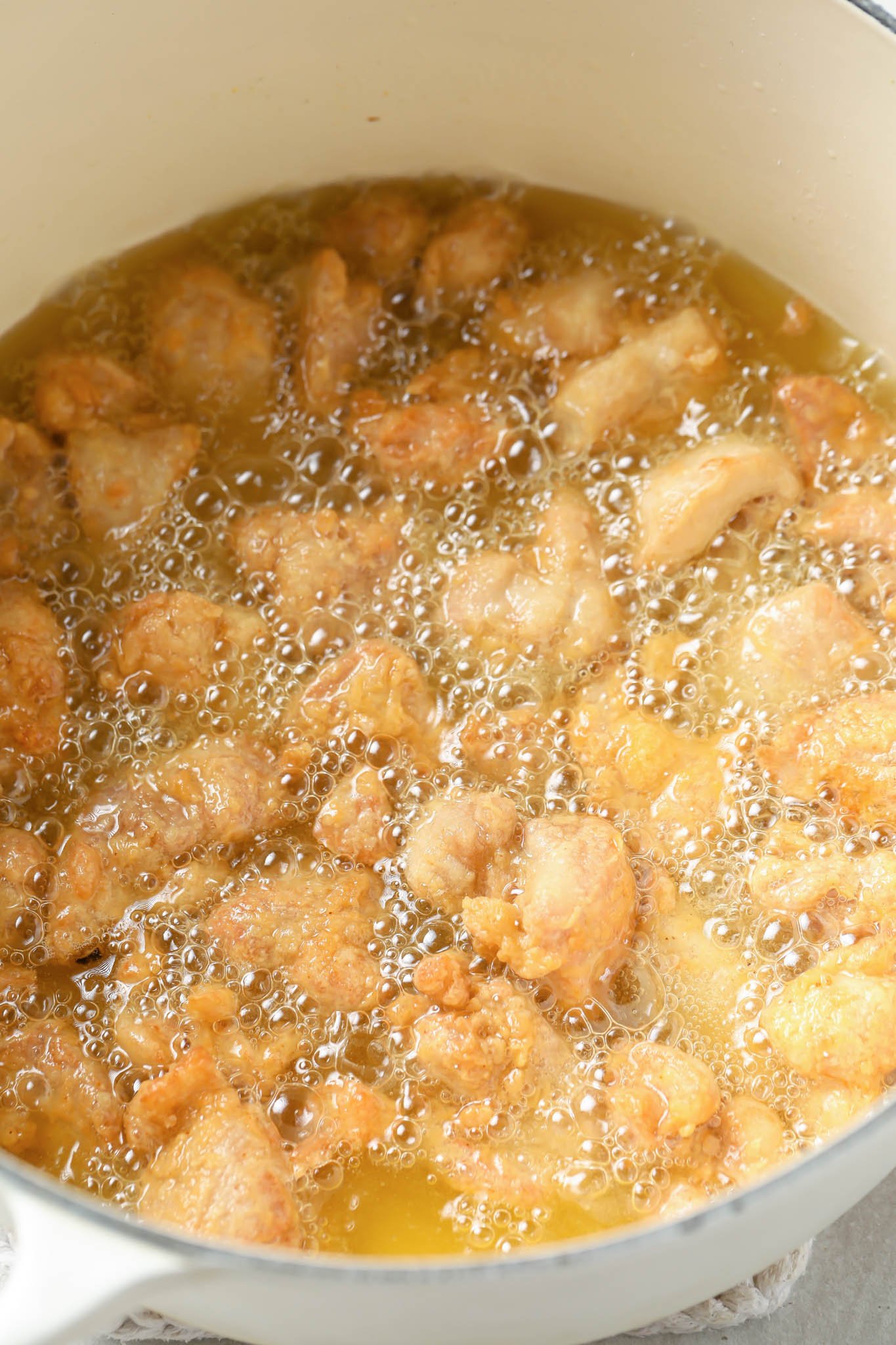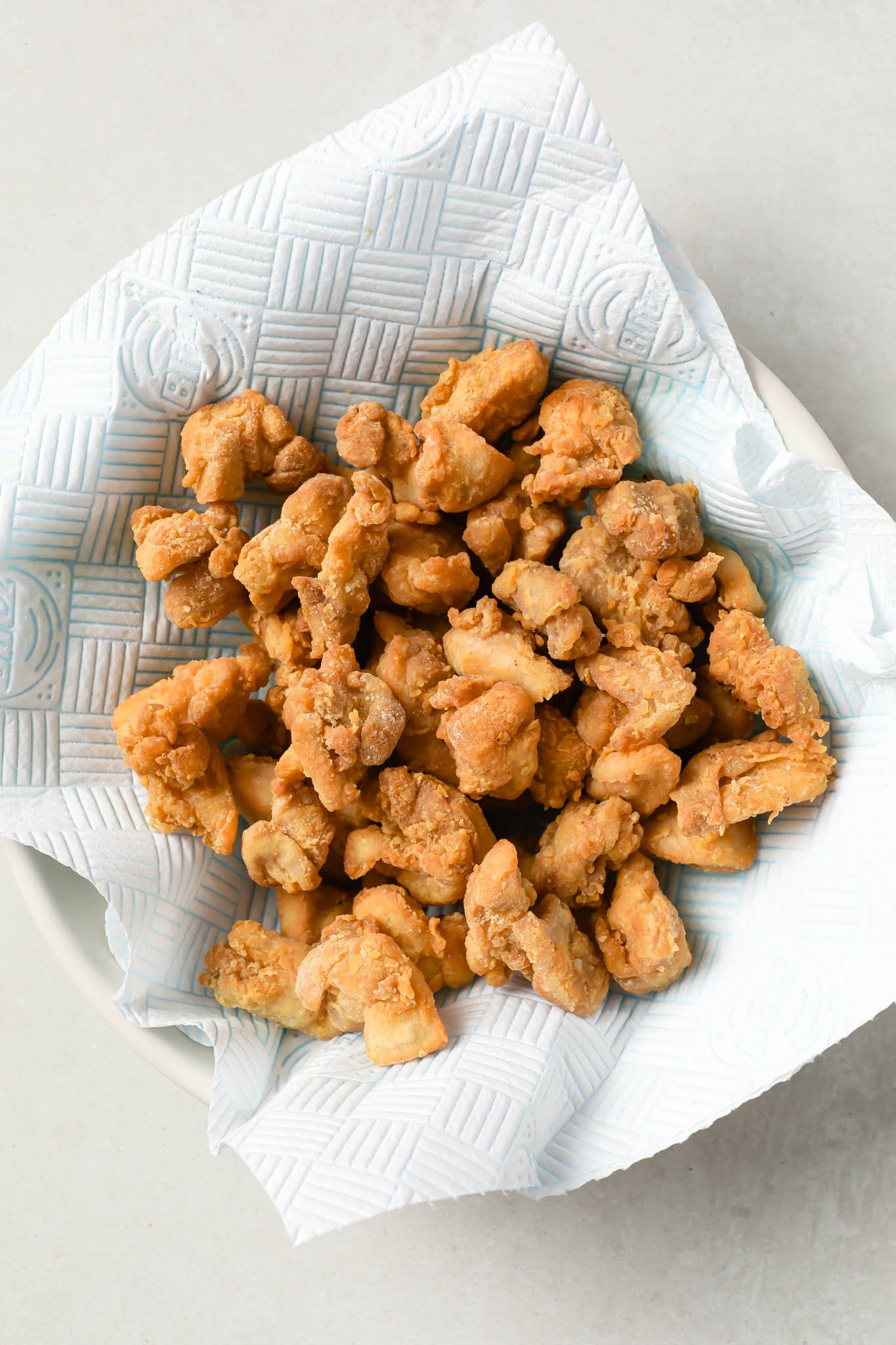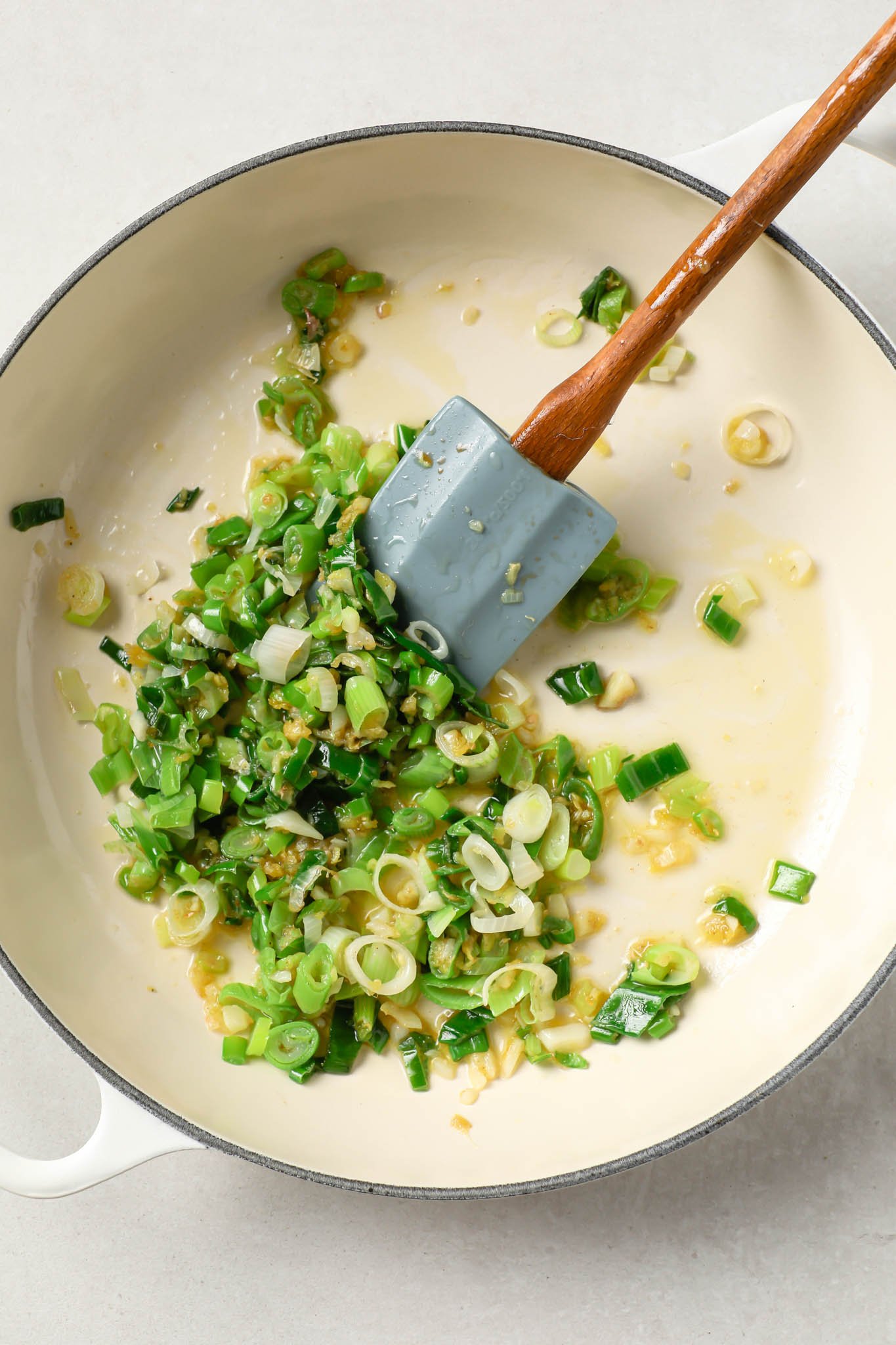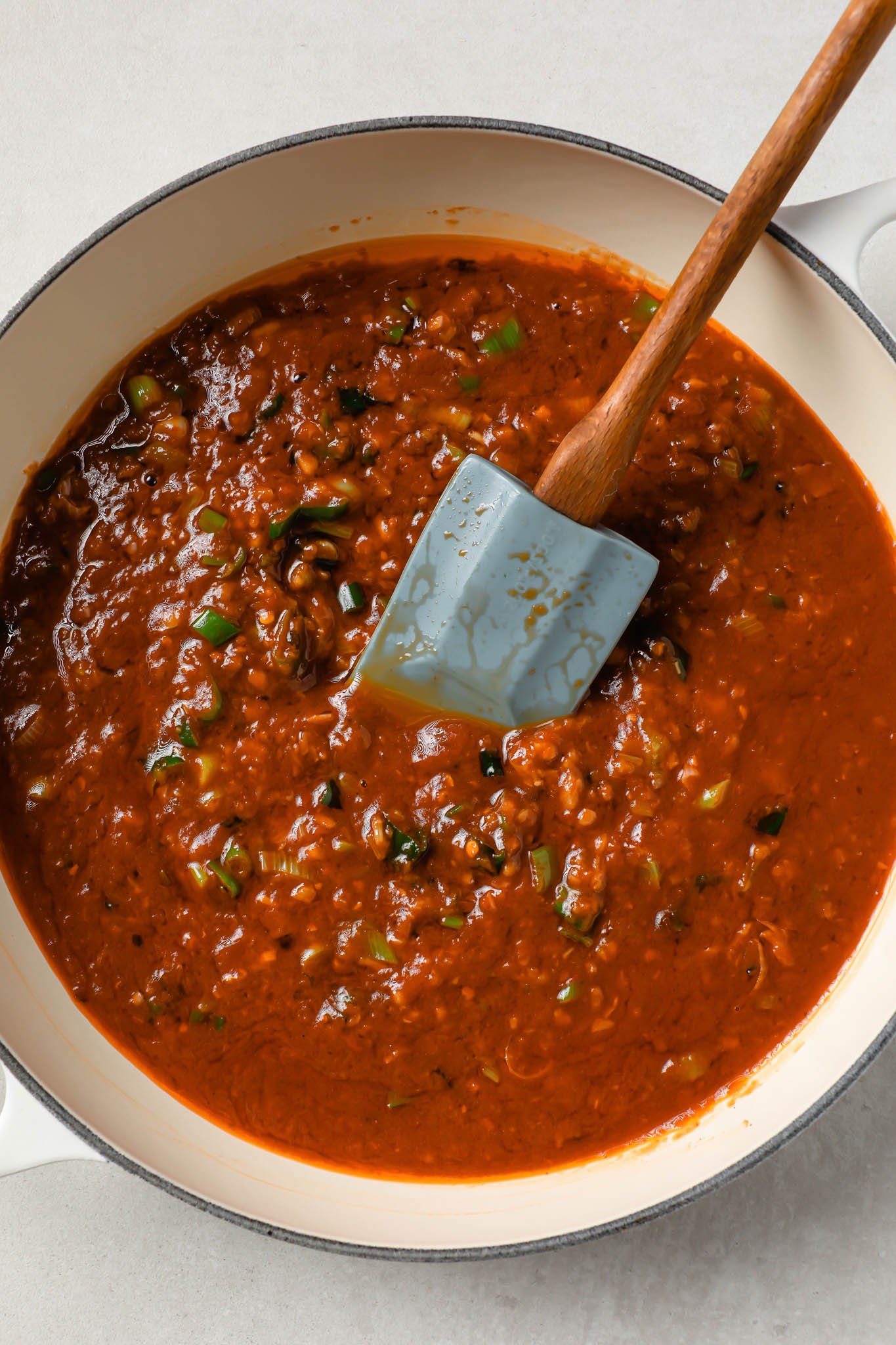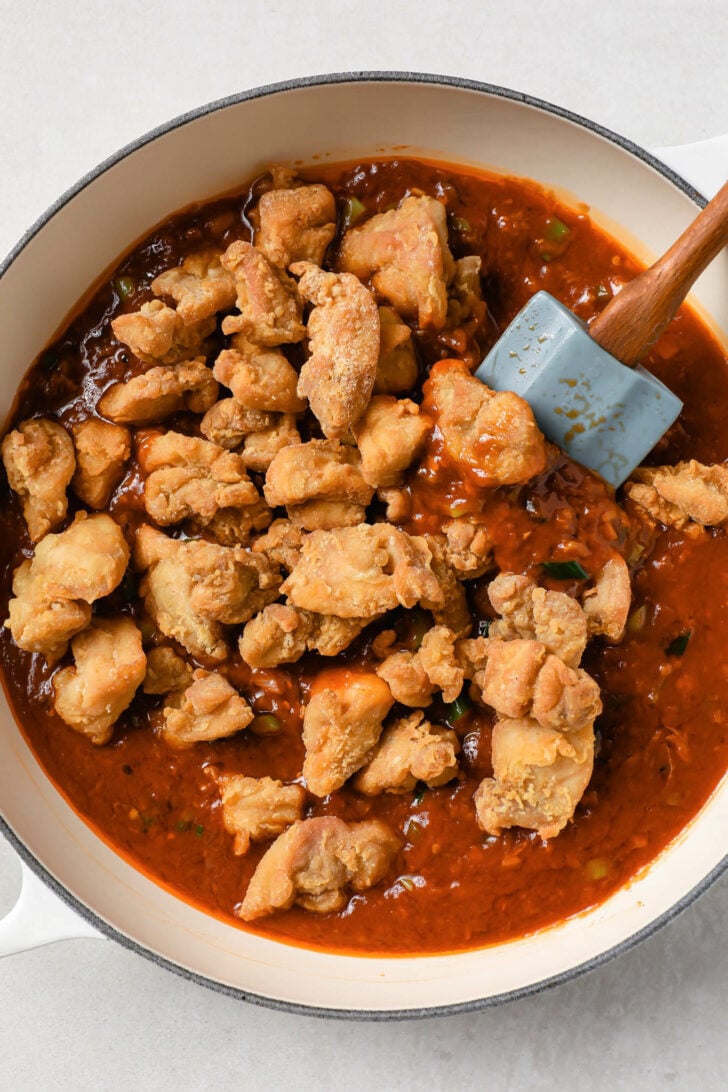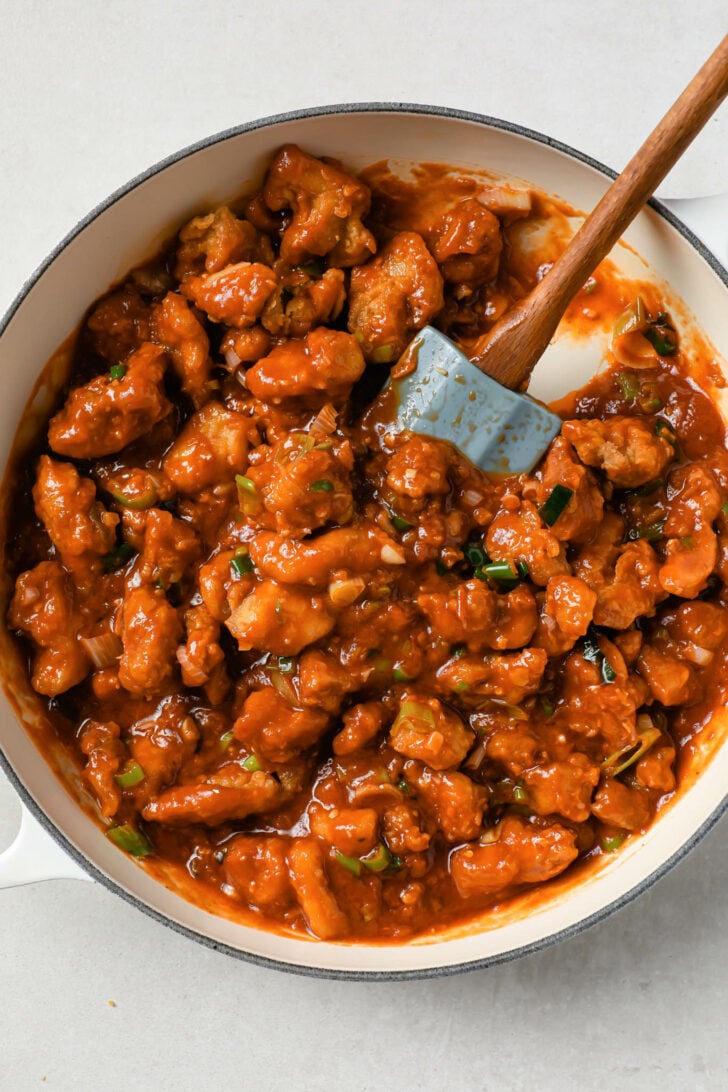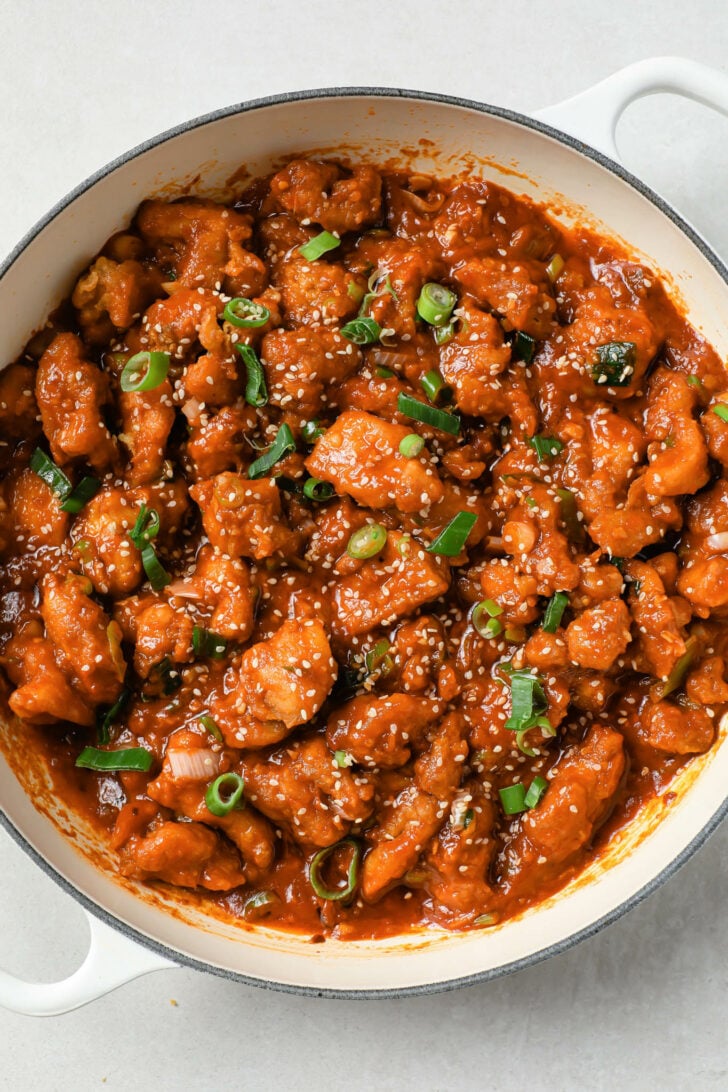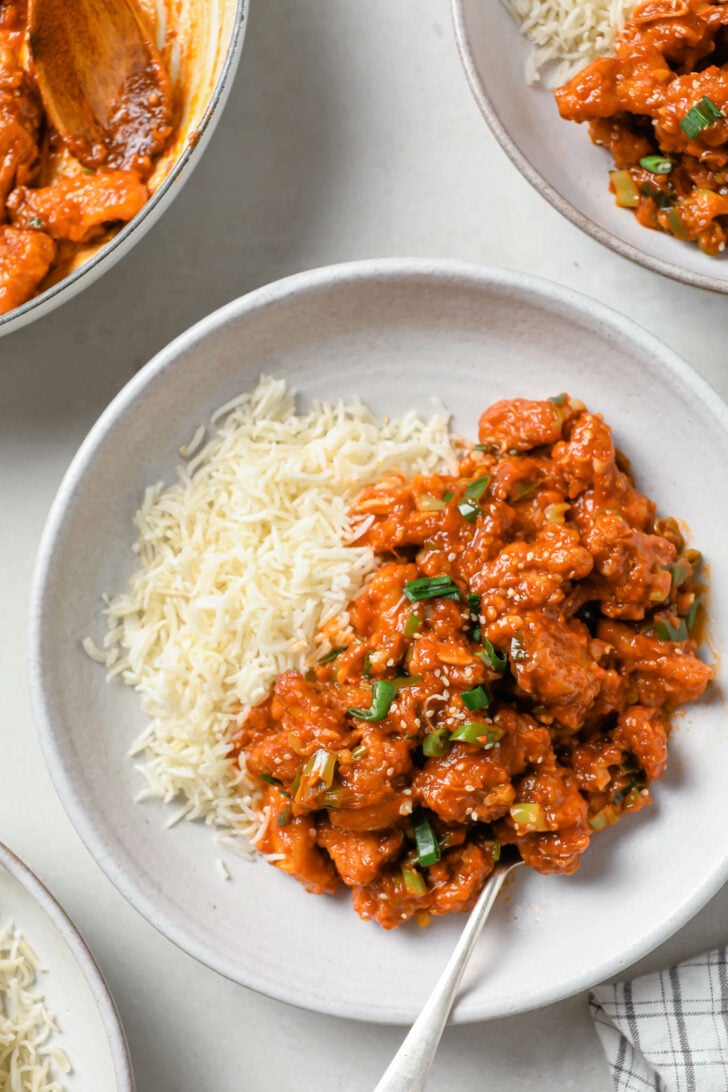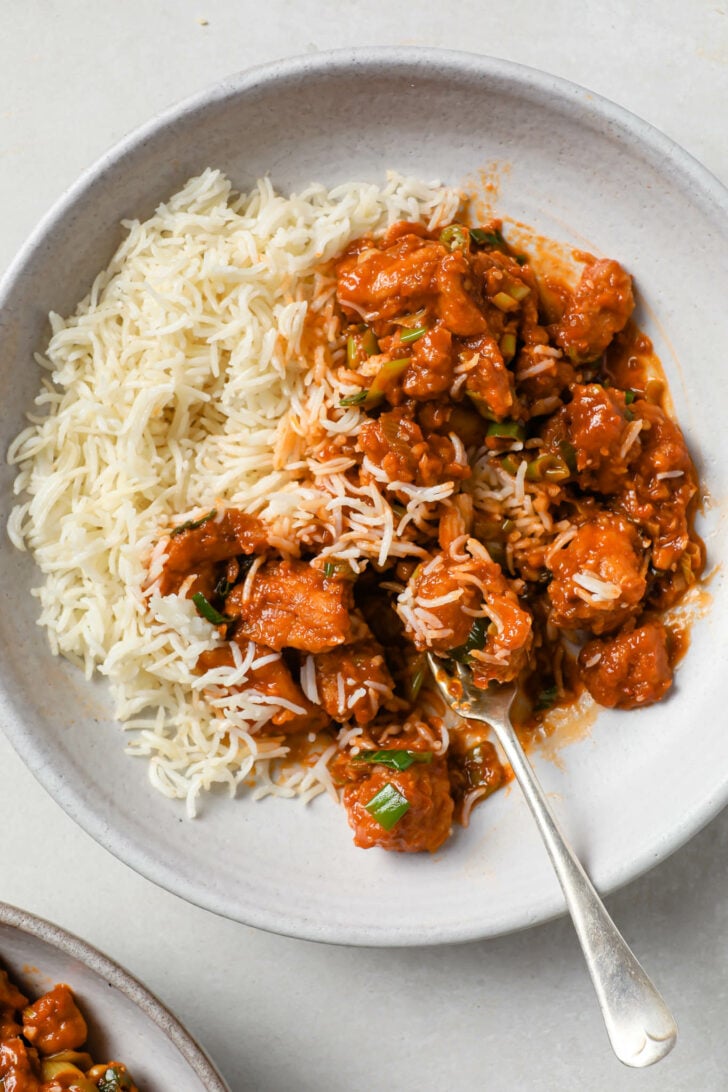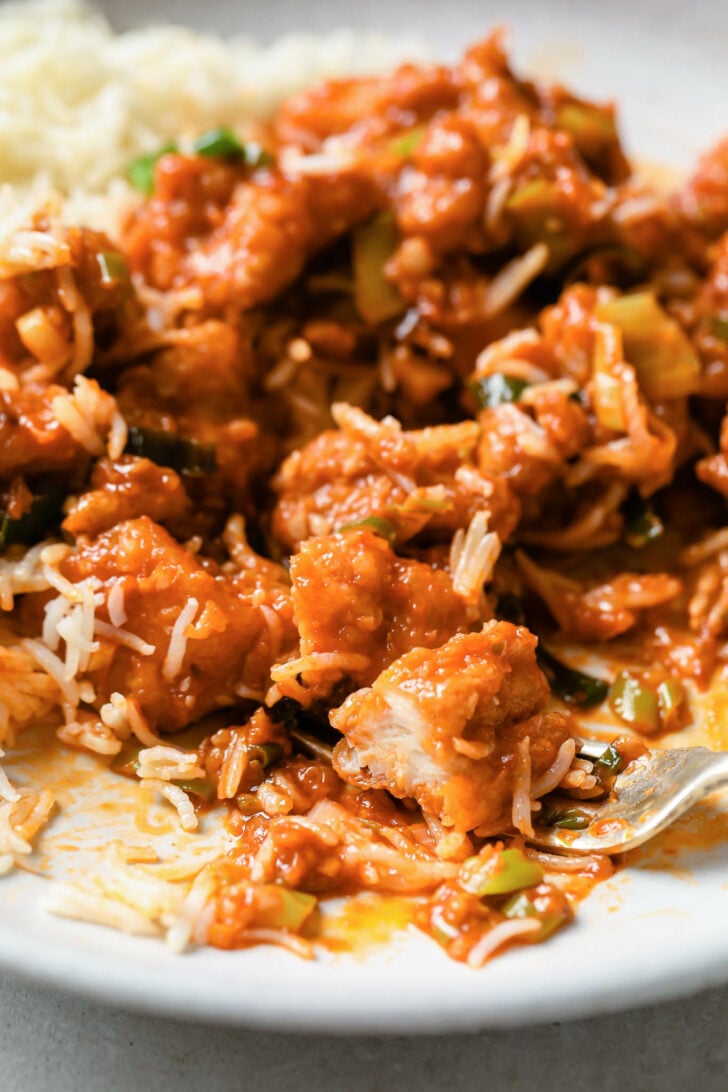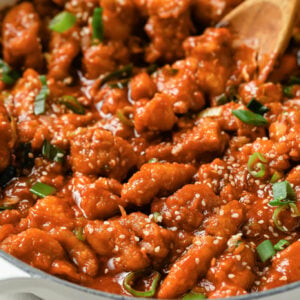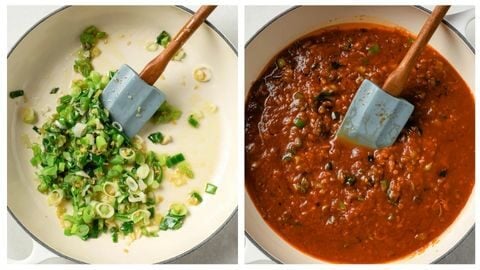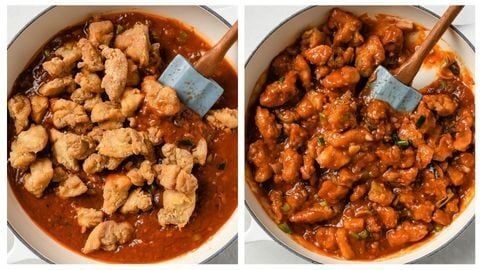It’s true that recipes on Tea for Turmeric come to you after some pretty rigorous R&D. See Mango Lassi, which had me standing in line at half a dozen restaurants. Or Chicken Biryani, which I tested so often that I can’t make it anymore. And let’s not forget Dahi Bhallay, which, to our delight and concern, overshadowed the Iftar table almost every evening last Ramadan. Enter your email below and get it sent straight to your inbox. Plus, get recipes & tips every week! But this Chicken Manchurian recipe has seen a particularly intense development phase. To come up it, I…
Tasted it at several restaurants, including Yum & Mei Kong in Lahore and Aga’s here in Houston. Took a Chinese cooking class….in Pakistan. Studied the principles of stir-fry from Kenji’s book The Wok. Tested it so many times that I’m practically Manchurian. (JK! As you’ll read below, Chicken Manchurian has little to do with China.)
What is Chicken Manchurian?
Chicken Manchurian is an Indo-Chinese dish with fried chicken in a hot and sweet dark-red sauce. It’s an entirely restaurant born and propagated dish, and it has all sorts of variations such as Gobi Manchurian, Paneer Manchurian, a dry version, a saucy version, and so on. Despite its name, Chicken Manchurian is not Chinese, nor does it come from what was historically known as Manchuria, China. Chicken Manchurian was actually invented by Nelson Wang, an Indian restaurateur of Chinese origin. As Wang himself noted, “What is Manchurian? Nothing! I made it up. There is not even a proper cuisine called Manchurian.” As a third-generation immigrant in India, Wang knew little about the up-and-coming Sichuan cuisine in the 1970s. But he did have a knack for adapting Asian cuisine to Indian preferences – mainly by deep-frying everything and adding heat to the sauces. Fair enough.
Pakistani-Style Chicken Manchurian vs Indo-Chinese Restaurant Style
Having traveled to Pakistan recently, I noticed a clear difference between the Chicken Manchurian there vs here in the U.S.
Pakistani-style Manchurian is wading in red sauce, and the chicken is only slightly crispy with a cornstarch-only batter. Indo-Pak restaurant Manchurian is almost always crispy (flour is involved) and only lightly coated in sauce. Like Chicken Shashlik and Chicken Jalfrezi, Manchurian here is often accompanied with cubed red and green bell peppers and onions.
This recipe is an amalgamation of both styles – it’s crispy AND saucy. If you’d rather not deep fry or would prefer a less-crispy, more Pakistani-style version, I’ve shared instructions on how to make the pan-fried version in the Variations section.
Ingredients for Chicken Manchurian
This recipe has 3 components:
Marinade Ingredients
My marinade is adapted from Kenji’s latest book, The Wok. To develop his chicken coating recipe, he tried out several batters to see which would result in the crispiest chicken.
Chicken: I prefer chicken thighs because they can withstand overcooking and still remain juicy and tender. But chicken breast will also work well. Egg white: Kenji noted that thicker, egg-based marinades provided superior results to thinner ones without egg. Soy sauce: You can use gluten-free soy sauce, tamari, and probably even coconut aminos. Rice vinegar or white vinegar: Kenji uses wine for the acidic element, which I’ve replaced with vinegar for obvious reasons. I prefer using rice vinegar for Asian dishes for the flavor and because it’s a little less intense. But in this quantity, you can hardly tell the difference.
Dry Coating:
Cornstarch: Called cornflour in other parts of the world, this adheres to the chicken and makes it crispy. All-purpose flour: Unlike cornstarch-only recipes like Cashew Chicken, Chicken Manchurian is tossed in flour to make it extra crispy. I haven’t tried using gluten-free flour in this particular recipe, but I have in past versions and I suppose it would work here as well. Red chili powder or cayenne: To add heat to the chicken itself. The chicken alone isn’t too spicy. The sauce takes care of that. But you can always add more spice here too if you like.
Manchurian Sauce Ingredients
Vegetable or Chicken Stock: The first ingredient used to make it extra saucy and to add depth of flavor. I use store-bought vegetable stock, but chicken stock can’t hurt. Tomato purée or tomato sauce: The second ingredient that adds sauce without making it overtly ketchupy. This is the runny kind that comes in a can or jar, but isn’t thick like tomato paste. Ketchup: I use Hunt’s Natural or Heinz Organic. (Other awesome recipes that use ketchup: Stovetop Chicken Thighs and Chicken Shashlik.) Chili garlic sauce: Adds heat, tang, and subtle sweet complexity, basically all the flavors we want in Manchurian. To lean more into South Asian flavors, I’ve tested with South Asian brands such as Mitchell’s or Maggi Hot & Sweet. But feel free to use Huy Fong Chili Garlic Sauce, Sriracha, or your favorite chili sauce (start with 1 tbsp so that it doesn’t get too spicy). Because of the tang this sauce adds, I find adding vinegar in the sauce unnecessary. More recipes that use Chili Garlic Sauce: Chicken Shashlik, Chicken 65, Honey Ginger Chicken, Hakka Noodles Sugar: I use raw cane but white or turbinado sugar work. Naturally, the other sauces you use may vary the amount you need, specifically the chili garlic sauce. Whether you use tomato purée (which doesn’t contain added sugar) or tomato sauce (which sometimes does) may also cause a slight variation. Red chili flakes: Add extra heat and compensate if your chili garlic sauce isn’t the spicy kind. White pepper or black pepper: I prefer using white pepper for Asian dishes, but black pepper will work equally well. Cornstarch: To thicken the batter. Most chinese recipes will have you make a separate cornstarch slurry, which allows you to cook the sauce before thickening it. I skip making a separate cornstarch slurry because you’re only simmering the sauce for a couple minutes (and because I’ll cut steps wherever I can).
Stir-Fry Ingredients
Garlic & ginger: Usually, I either run these through a food processor or use a mortar & pestle to crush them. In this case, you want to use a knife or food processor to finely chop so the garlic doesn’t become mushy and the ginger doesn’t become stringy. Green onions: Also called scallions, and sometimes spring onions. I like to chop the white and light green parts very finely. Sometimes I’ll just throw them in the food processor with the garlic and ginger. Slice the deep green parts and keep for garnish.
How to make Chicken Manchurian
Here’s what you’ll do:
Variations
Pan-fried Option – Less Crispy but No-Deep Frying, No Flour
I suggest the crispy option, and I’d love for you to try it, which is why I’ve included it in the main recipe. Should you still prefer to skip the deep frying or if you’d like to keep it gluten-free, here’s how you’d do it:
How to Increase Sauce (Gravy)
The two ingredients that contribute to the sauciness of this recipe are the stock and tomato purée/sauce. To increase the amount of gravy, increase the stock to 1 cup and add up to 2 additional tbsp of the tomato purée. Any more than this will likely interfere with the proportions, so you’ll have to do a little taste adjusting.
1 lb (454g) chicken breast or thighs, cut into 3/4” cubes 1 tbsp cornstarch (cornflour) 1/2 tsp kosher salt 1/4 tsp red chili powder or cayenne 1/8 tsp sugar Pinch ground white or black pepper 1 tbsp neutral oil, such as grapeseed oil
Marinate chicken: Rinse the chicken in cold water & drain. Transfer the chicken to a small bowl and lightly pat it dry. Toss with all ingredients listed under marinade. Set aside. Prepare sauce as instructed in the recipe. Pan-fry chicken: Heat the oil in a large, non-stick skillet or wok over medium-high heat. Once hot, add the chicken in a single layer. Cook for 1 minute, until the coating on the bottom is light brown. Then continue tossing and cook for another 1-2 minutes, until the chicken is lightly golden. The exterior of the chicken should no longer be pink. Chicken thighs will take slightly longer than breast. Transfer the chicken to a bowl and immediately cover it. Proceed with the remaining recipe.
How and When to Add Bell Peppers
To add bell peppers, use 1/2 of a small green bell pepper (~80g) and 1/2 of a small red bell pepper (~80g) and cube them into 1″ squares. Add them in along with the green chili pepper. With the heat on high, stir-fry them for 1-2 minutes, or more to your liking. Then add the sauce and proceed with the remaining steps.
What to Serve with Chicken Manchurian
Restaurants usually serve the dry version of Chicken Manchurian as an appetizer. As a main dish, you can serve with plain basmati rice, fried rice, or any type of noodles such as Chow Mein. For an Indo-Chinese feast, a great menu may involve a soup, a contrasting main dish like Chilli Chicken, Cashew Chicken or Mongolian Beef, rice, Hakka Noodles, and Pakistan Eat’s Desi-Style fried shrimp.
Tried this recipe? If you have a minute, please consider leaving a comment telling me how it was! You can also take a quick picture and upload it directly into the comments. If you’re on Instagram, please tag me so I can see your creations. I truly love hearing from you. Thank you!
